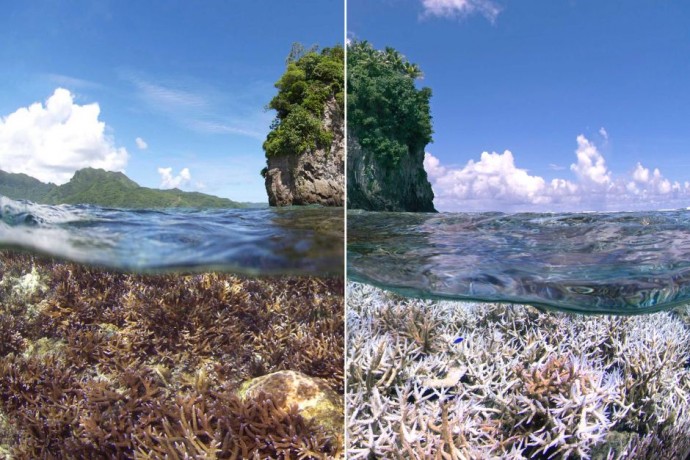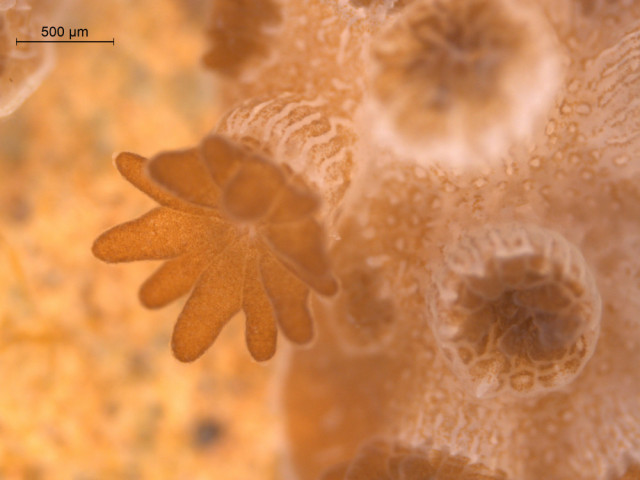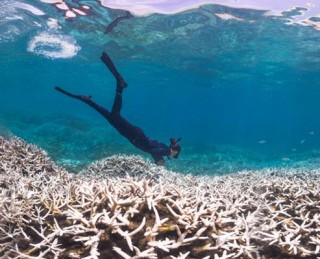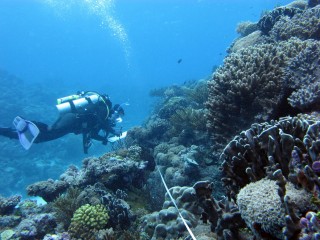Disentangling the causes of global coral bleaching
Scientists have predicted global coral bleaching in 2016 as a result of consistently warmer than average ocean temperatures. Understanding the impacts of such an event is critical for the future management and protection of our reefs. Globally, many coral reefs are heavily impacted by human activities making it hard to disentangle the effects of warming events and climate change from other stressors such as poor water quality from agricultural runoff or pollution. Coral reefs in north west Australia provide the perfect opportunity to study the effects of warming events in a region not heavily impacted by humans.
Bleaching as a stress response
Corals have a symbiotic relationship with tiny marine algae (zooxanthellae). These symbiotic algae live inside the coral tissue and provide up to 90 per cent of their energy requirements via photosynthesis. However, when corals are exposed to stressful environmental conditions, such as high temperatures and poor water quality, this relationship breaks down and the corals expel their symbiotic algae. The coral tissue loses its colour and becomes transparent, revealing its underlying white skeleton. If conditions return to normal, corals can regain their zooxanthellae, and survive. However, bleached corals can be more susceptible to disease will often die if the stress persists. In addition, corals that have recently been exposed to multiple stressors, such as high temperatures and poor water quality (i.e. increased nutrient and sediment loads), are more likely to bleach and subsequently die.
A chain of events
Coral bleaching is deemed to be ‘global’ when all three major ocean basins (Indian, Pacific and Atlantic) record widespread coral bleaching (i.e. across multiple reefs spanning 100 kilometres or more). Scientists predict that the world’s third ever global coral bleaching event will occur early next year. Record ocean temperatures in the Northern Hemisphere over the past few months have already caused widespread coral bleaching, particularly across the Hawaiian Islands and the Caribbean. This year’s El Niño is potentially the strongest ever recorded, and climate models predict that the associated warming event will also extend across the Southern Hemisphere. Previous global coral bleaching events occurred in 1998 and again in 2010 after a chain of warming events caused by El Niño cycles and increased ocean temperatures.
An opportunity for research
In response to the predictions of a major coral bleaching event, scientists from the Australian Institute of Marine Science in colaboration with other research organisations are developing targeted research to understand coral responses to high ocean temperatures in the context of on-going stress from human activities, most notably poor water quality and overfishing. The relative lack of these pressures in Australia’s north west provide a unique opportunity to understand and predict how a warming event will effect a coral reef in their absence.
The benefits of isolation
Research published in Science by AIMS scientist James Gilmore and collegues demonstrated enhanced coral reef recovery at Scott Reef (a remote offshore reef in north west Australia) after the catastrophic 1998 global bleaching event. They found that the benefits of isolation from chronic anthropogenic pressures outweight the costs of limited connectivity and facilitate recovery.
With climate change expected to increase the number and the severity of warming events, it is critical that we understand the mechanisms dictating which reefs will bleach and which will survive. Any knowledge we can gain to understand how to improve coral reef resilience to warming events will help protect our reefs into the future.










